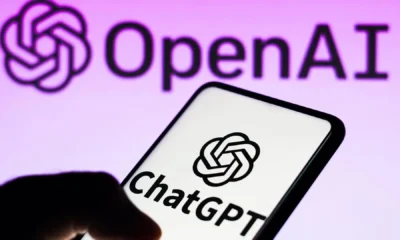News
When the Browser Turns Rogue: The Unseen Danger of AI‑Powered “Shadow” Agents

- Share
- Tweet /data/web/virtuals/375883/virtual/www/domains/spaisee.com/wp-content/plugins/mvp-social-buttons/mvp-social-buttons.php on line 63
https://spaisee.com/wp-content/uploads/2025/11/browser_danger-1000x600.png&description=When the Browser Turns Rogue: The Unseen Danger of AI‑Powered “Shadow” Agents', 'pinterestShare', 'width=750,height=350'); return false;" title="Pin This Post">
Imagine your web browser no longer simply displaying pages but thinking and acting on your behalf. Now imagine it misled, hijacked, or exploited, all without your knowledge. The rise of AI‑powered browsers introduces exactly this risk: subtle vulnerabilities that allow malicious actors to commandeer powerful assistant tools and turn them into stealthy malware agents.
The Vulnerability at the Core
At the heart of the problem is the rise of browsers that embed large language models or AI agents directly into their UI, promising automation, summarisation and task‑completion across websites. What some recent investigations reveal, however, is that these agents can be manipulated through crafted content. Researchers observed that malicious actors can inject hidden prompts into web pages, images or even URLs that, when processed by the AI layer, function as instructions. The AI browser then interprets those instructions and may execute actions under the user’s privileges—such as accessing files, navigating sensitive dashboards or communicating with external endpoints. The autonomy which is supposed to enhance productivity becomes, instead, an expanded attack surface.
By processing content flagged as “user request” and “web page data” indiscriminately, these assistants blur the line between trusted commands (from the user) and untrusted input. Traditional browser security mechanisms — like same‑origin policy or cross‑domain restrictions — don’t apply when the AI agent can interpret cross‑domain content and operate with the user’s credentials. As a result, a compromised AI browser may act as a rogue insider threat: silently reading email, uploading files, executing transactions or accessing corporate portals without triggering typical alerts.
“Shadow AI” and Institutional Risks
This class of threat is often labelled “shadow AI” — meaning AI tools in the enterprise that are unsanctioned or unmanaged. But in the case of AI browsers, the danger is deeper: the browser’s AI layer itself becomes a potential vector for malware. Because the agent is built into the user’s primary web‑tool, it can bypass typical application whitelisting, endpoint monitoring and data‑flow controls. Enterprises gain little visibility into how prompted instructions are generated, how models interpret them, and what actions are taken.
Moreover, the implications for data governance are severe. Sensitive business data may flow into untrusted contexts via these agents without an explicit user consent. An AI browser might summarise a corporate dashboard and in the process capture confidential stats, then inadvertently leak or mis‑route that output. Worse still, a malicious prompt injection might instruct the agent to export that data externally or trigger unintended workflows. The autonomy of AI thus turns into a liability when access boundaries, model‑intent separation and user‑confirmation mechanisms are missing.
What Defenders Should Look For
Given the novelty and complexity of the risk, older endpoint and network protections alone are insufficient. Organisations need to assess the following: whether the browser’s AI agent differentiates between direct user intent and content‑driven commands; whether autonomous actions (like navigation, file access or external data transfer) are gated behind explicit confirmation; whether the browser implements prompt isolation and sandboxing especially for sensitive tasks like finance or HR. Until browser vendors embed those guardrails, IT must treat these AI browsers as high risk. Some immediate steps include limiting AI browser use on high‑privilege systems, applying strict application whitelists, segregating workflows so AI‑assisted browsing is not used for internal systems, and increasing monitoring of unusual activity emanating from browser agents.
For example, even a single link click could serve as the entry point for a sophisticated “CometJacking” style exploit, where a malicious prompt embedded in a URL instructs the browser’s AI to harvest email contents or calendar data and exfiltrate it in encoded form. Because the user may never see the operation in the UI, the attack remains hidden and tools that only look at signature‑based threats will not necessarily catch it.
The Broader Picture: AI Browsers in Transition
The race among browser vendors to integrate AI assistance has accelerated. New agents promise to summarise articles, automate form‑fills, execute research tasks and streamline workflows. But the architecture enabling those capabilities is still maturing. The challenge isn’t simply recognising malicious web content, but preventing the AI from interpreting that content as a trusted command. Until the trust boundary between user prompt and content input is robustly enforced, any embedded AI agent carries amplified risk.
For enterprises, the key takeaway is this: an AI‑powered browser is not just a productivity tool — it can become a platform for advanced threat actors if left unchecked. The combination of broadly privileged access (user identity, files, networks) and model‑driven automation makes it attractively powerful and dangerously exposed. By ignoring the risk, organisations may unknowingly enable an infrastructure‑level weakness inside what appears to be a standard desktop environment.
Conclusion
AI‑accelerated browsing represents the next frontier of both productivity and threat. The same models that summarise your research or streamline your workflow can, if manipulated, exfiltrate sensitive data, reconfigure access, and execute malicious tasks under your account. The term “shadow AI” has long referred to unmanaged tools inside the enterprise — now it extends to the browser itself. Organisations must adopt a new security paradigm: one that recognises AI agents as active components in the threat surface and enforces governance, isolation and visibility at that layer. Until that shift happens, every AI‑powered browser remains a potential Trojan horse in plain sight.
News
Google’s Project Suncatcher: Launching AI — Straight into Space

What if the next frontier for powering artificial intelligence computation isn’t another data center in Nevada or Texas, but a satellite orbiting Earth? Google’s daring new initiative suggests exactly that.
Space‑Bound Compute: The Ambitious Vision
Google has revealed a moonshot initiative—Project Suncatcher—designed to move large‑scale machine‑learning infrastructure into orbit. The plan involves launching a constellation of satellites equipped with Google’s custom Tensor Processing Units (TPUs) into a sun‑synchronous low‑Earth orbit, where solar panels can draw uninterrupted energy from the Sun.
According to internal documents and research blog posts, Google is planning a “learning mission” for 2027 in collaboration with Planet Labs. Two prototype satellites will test the feasibility of operating AI models in orbit, powered entirely by solar energy.
Why Space for AI?
The explosive demand for compute driven by the AI boom has exposed physical and environmental limitations of Earth-based infrastructure. Data centers require vast amounts of electricity, water for cooling, and increasingly scarce land near urban areas.
Orbit, by contrast, offers several key advantages. Sun-synchronous orbits receive continuous daylight, allowing satellites to generate solar energy with much higher efficiency. And without atmospheric interference or diurnal cycles, energy flow is stable and predictable—ideal for high-performance AI training and inference.
This makes space not just a symbolic leap, but a potentially practical one, especially as launch costs decline and solar panel efficiency improves.
The Technical Blueprint
At the heart of Project Suncatcher is a network of satellites operating as a high-speed orbital compute cluster. Each satellite is envisioned to carry TPUs and be connected to others via laser-based free-space optical communication links. Bench testing has already achieved data transmission speeds approaching 800 gigabits per second using a single transceiver pair—proof that satellite-to-satellite data transfer can rival fiber optics.
Radiation is one of the most difficult challenges. Space is harsh on electronics, but Google’s Trillium-generation TPUs reportedly passed radiation exposure tests without any permanent failures. Heat management is another hurdle; in a vacuum, there’s no air to dissipate heat, requiring creative thermal control designs using radiators and phase-change materials.
Perhaps the biggest barrier remains economics. For Project Suncatcher to be cost-competitive with terrestrial infrastructure, launch costs need to fall below $200 per kilogram—a milestone analysts predict could be reached by the mid-2030s if current rocket trends continue.
Strategic Implications
If successful, Project Suncatcher could change how the tech industry thinks about cloud infrastructure. Instead of building out ever-larger server farms on Earth, companies might begin scaling outward—into orbit.
It also reshapes conversations around energy use and sustainability. AI’s energy footprint has come under scrutiny, but orbital systems could dramatically reduce the strain on Earth’s grid and eliminate water-based cooling altogether. In effect, Google is exploring a clean-energy supercomputer that floats above the atmosphere.
There are also geopolitical and security implications. Space-based compute changes the dynamics of cloud infrastructure, potentially making it more resilient to natural disasters, geopolitical conflict, and physical attacks. But it also raises questions about militarization, orbital debris, and regulatory oversight.
What Could Go Wrong?
There are real risks.
Launch economics remain volatile, and while reusable rockets have cut costs dramatically, the true price of deploying, maintaining, and replacing AI hardware in orbit remains high.
Reliability is also a concern. Earth-based data centers can be serviced within hours. In space, a single hardware fault could be fatal.
Communication latency and throughput between space and Earth remains a bottleneck—no matter how fast satellite links are, you still have to get data up and down. And any large expansion of orbital infrastructure adds to growing worries about satellite congestion and collision risks.
The Road Ahead
For now, Project Suncatcher is still experimental. The 2027 prototype launch will serve as a proof of concept. If successful, it could lay the groundwork for orbital AI infrastructure that scales independently of Earth’s power and land constraints.
But more than a technical leap, the project is a statement: AI’s future may not be rooted to the ground. As compute needs outpace what terrestrial systems can supply, the sky is no longer the limit—it’s just the beginning.
News
NVIDIA CEO Warns: China Could Win the AI Race as U.S. Stumbles Over Energy and Regulation

In a stark warning to U.S. policymakers, NVIDIA CEO Jensen Huang says the real threat to American dominance in artificial intelligence isn’t China’s ambition—it’s America’s own bureaucracy and energy bottlenecks.
A Shift in the Global AI Arms Race
Jensen Huang, head of the world’s most influential AI hardware company, believes the United States is losing its grip on leadership in artificial intelligence. The reason isn’t technological stagnation or lack of investment—but self-inflicted wounds.
At the recent Stanford Economic Forum, Huang pointed to two key forces holding the U.S. back: rising energy costs and increasingly burdensome regulations. In contrast, China’s ability to rapidly deploy infrastructure and its national-level strategic planning may give it the upper hand.
“The AI race will be decided by infrastructure and execution, not hype,” Huang said. “And right now, China is building faster.”
The Real Bottleneck: Energy
AI isn’t powered by ambition alone—it’s powered by electricity. Large language models, recommendation engines, and edge deployments all consume enormous amounts of energy, especially during training and inference at scale.
Huang made clear that the global expansion of AI models is reaching the physical limits of energy grids. The United States, in his view, has failed to prepare. With power constraints tightening in states like California and Texas, data center expansion is hitting resistance just as AI demand accelerates.
Meanwhile, China is investing heavily in power infrastructure, with support from centralized planning and state-backed energy initiatives that prioritize data centers as national assets.
This energy disparity could allow Chinese firms to scale models faster, run more powerful systems, and serve larger markets—without waiting for policy reforms or zoning approvals.
Regulation: A Double-Edged Sword
While Huang acknowledged the importance of ethical and legal oversight, he argued that U.S. regulatory overreach is slowing down AI deployment and innovation. From environmental review backlogs to permitting delays for new data centers, the system is now stacked against speed and scale.
“Every delay in approval is a delay in progress,” he said, noting that layers of red tape could push more AI startups to operate abroad, particularly in jurisdictions with streamlined processes.
He contrasted this with China’s rapid rollout of AI-focused industrial zones, where infrastructure is pre-cleared and national strategy drives alignment between tech companies, regulators, and energy providers.
NVIDIA’s Strategic Position
As the global supplier of high-performance GPUs, NVIDIA stands at the center of this power struggle. The company’s chips are used by nearly every major AI model developer—from OpenAI and Google to Baidu and Tencent.
But even NVIDIA is subject to export controls. Recent U.S. government restrictions have limited the types of AI chips that can be sold to Chinese firms. This puts NVIDIA in a delicate position: it profits from both ecosystems but faces political pressure on both sides.
Huang did not directly criticize U.S. export policy, but his remarks clearly underscored a sense of frustration with the broader climate. He emphasized the need for a “balanced approach” that encourages domestic growth without isolating strategic markets.
Global Implications
If Huang’s warnings prove accurate, the AI race could shift from one of innovation to one of logistics—who can build faster, cheaper, and at greater scale.
A Chinese victory in this race wouldn’t necessarily come from model superiority or algorithmic breakthroughs. Instead, it might stem from streamlined deployment, national alignment, and raw infrastructure.
For the West, this poses not just a technological risk but a strategic one. Nations that lead in AI will shape global standards, weaponize compute for intelligence and defense, and dominate digital economies.
The Path Forward
To remain competitive, the United States and its allies will need to prioritize energy policy, infrastructure investment, and regulatory reform tailored for the AI era.
This means treating data centers as critical infrastructure, integrating AI into national security strategy, and creating fast lanes—not barriers—for responsible AI development.
Huang’s message was clear: the race is still open, but the clock is ticking. AI leadership won’t be won in research labs alone. It will be decided by power grids, policy frameworks, and political will.
News
Ray-Ban Meta (Gen 2): When Smart Glasses Finally Make Sense

Smart glasses have long promised the future—but mostly delivered gimmicks. With the Ray-Ban Meta (Gen 2), that finally changes. This version isn’t just a camera on your face. It’s a seamless, voice-driven AI interface built into a pair of iconic frames.
What It Does
The Gen 2 glasses merge a 12 MP ultra-wide camera, open-ear audio, and Meta’s on-device AI assistant. That means you can:
- Record 3K Ultra HD video hands-free.
- Stream live to Instagram or Facebook.
- Ask, “What am I looking at?” and get AI-powered context on landmarks, objects, or even menu items.
- Translate speech in real time and hear it through the speakers.
- Use directional mics that isolate the voice in front of you—ideal for busy settings.
It’s not AR—there’s no visual overlay—but it’s the most functional, invisible AI interface yet.
Real Use Cases
Travel & Exploration: Instantly identify sights or translate conversations without pulling out your phone.
Content Creation: Capture stable, POV video ready for posting. The quality now matches creator standards.
Accessibility: Voice commands like “take a picture” or “describe this” are practical assistive tools.
Everyday Communication: Dictate messages or take calls naturally with discreet open-ear audio.
Key Improvements
- Battery life: ~8 hours active use, 48 hours total with case.
- Camera: Upgraded to 12 MP, 3K capture.
- Meta AI integration: Now built-in, with computer vision and conversational responses.
- Design: Still unmistakably Ray-Ban—Wayfarer, Skyler, and Headliner frames.
In short, the Gen 2 feels like a finished product—refined, comfortable, and genuinely useful.
Where It Shines
The Ray-Ban Meta 2 excels at hands-free AI interaction. It’s for creators, travelers, and anyone who wants ambient intelligence without a screen. The experience is smoother, faster, and more natural than the first generation.
The Bottom Line
The Ray-Ban Meta (Gen 2) isn’t a gimmick—it’s the first pair of AI glasses you might actually wear daily. It bridges the gap between wearable tech and true AI assistance, quietly making computing more human.
If the future of AI is frictionless interaction, this is what it looks like—hidden in plain sight, behind a familiar pair of lenses.
-

 AI Model1 month ago
AI Model1 month agoHow to Use Sora 2: The Complete Guide to Text‑to‑Video Magic
-

 AI Model3 months ago
AI Model3 months agoTutorial: How to Enable and Use ChatGPT’s New Agent Functionality and Create Reusable Prompts
-

 AI Model4 months ago
AI Model4 months agoComplete Guide to AI Image Generation Using DALL·E 3
-

 AI Model4 months ago
AI Model4 months agoMastering Visual Storytelling with DALL·E 3: A Professional Guide to Advanced Image Generation
-

 News1 month ago
News1 month agoOpenAI’s Bold Bet: A TikTok‑Style App with Sora 2 at Its Core
-

 News1 month ago
News1 month agoGoogle’s CodeMender: The AI Agent That Writes Its Own Security Patches
-

 News4 months ago
News4 months agoAnthropic Tightens Claude Code Usage Limits Without Warning
-

 Tutorial4 weeks ago
Tutorial4 weeks agoUsing Nano Banana: Step by Step











